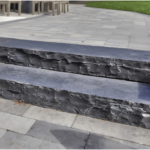Stairs made of stone have added charm to homes and places for many years and are still useful today. When you are deciding on Stone Steps stairs, no matter if it’s for your garden entry or front door, certain elements should be carefully considered. The right stone stairs for your place should combine low price, safety, a long life and attractive looks with the design of your home. Picking the right option will improve the beauty and worth of your home and ensure your investment is secure.
1. Consider Your Climate and Weather Conditions
The type of stone that is resistant to weather is largely determined by your area’s climate. Different stones are affected by temperature changes, wetness and seasonal shifts. Frequent freezing and thawing can break or damage some types of stone in places where winters are severe. Even though they are both beautiful, limestone and sandstone do not stand up well to tough weather like granite or slate. Dry climates call for stones that aren’t weakened by sunlight and humid areas require options that resist moss and algae. Knowing the area around your exterior stone stairs will make sure they stay in good condition over the years.
2. Evaluate Stone Durability and Hardness
How well your stairs look and function even as they age is greatly affected by the hardness and durability of the stone. Granite and quartzite are the best choices for busy areas due to their sturdy resistance to all sorts of damage such as weather, wear and scratches. Even though their charm is unique, softer stones such as travertine or limestone often require more attention. Try to use the Mohs hardness scale whenever you are shopping for jewelry, as it tells you about the material’s durability. Stones that have a higher density often endure freezing and thawing without problems due to holding less water. You might need to pay more for resilient stone at first, but it will save you money since it doesn’t break down easily.
3. Prioritize Safety Features and Slip Resistance
When choosing stone steps, safety should always come first, particularly in places that are susceptible to ice or dampness. Your stone’s surface roughness has a big impact on user safety and slide resistance. Compared to polished, smooth finishes that become dangerously slippery when wet, natural stones with somewhat rough or uneven surfaces offer superior grip. To improve grip, look for stones with naturally cleft surfaces or those that can be brushed or flamed. Each step’s edge profile is important for safety as well; slightly rounded or beveled edges lower the chance of fall-related injuries. Regardless of stone type, water pooling produces dangerous circumstances that may be avoided with proper drainage design.
4. Match Your Home’s Architectural Style
Your stone stairs should blend nicely with the overall design style and existing architectural features of your house. Classic materials that go well with brick or wooden siding, such as limestone or bluestone, are generally advantageous for traditional homes. Sleek concrete or granite substitutes with simple lines and little texture may be required for modern homes. When choosing, take into account the color scheme of your external walls, roofing materials, and existing hardscaping. The stone’s proportions and scale should also blend in with the size and design of your house. While delicate, tiny stones could seem inconsequential against a huge colonial home, massive, chunky stones might overpower a little cottage. The most aesthetically pleasant and unified look is produced by visual equilibrium.
5. Plan Your Budget and Long-term Investment
Pricing for stone stairs changes a lot based on their size, what they’re built from and how much work is needed to set them up. Stones such as premium granite and marble are rare and costly, yet they are extremely strong and very attractive. You can also choose cultured stone or concrete pavers for the same lovely effect without spending a lot of money. Include the cost of shipping, installation, and any site preparation in addition to the initial material price. Think of the long-term value proposition. Over time, higher-quality stones tend to be more cost-effective since they require less care and last longer. Before making your choice, get thorough quotations from many contractors and suppliers to get a sense of the overall project cost.
6. Assess Maintenance Requirements and Care Needs
Different stones call for different types and levels of regular care to stay attractive and strong. Although several stones do not react much to most environmental problems, some prefer routine maintenance with sealant to prevent spots and water stains. Unlike solid rocks such as granite, sandstone and limestone often call for routine cleaning and regular preventive care. Take into consideration whether you can regularly look after the stone and clean it when selecting it. When planning ahead for the stone, don’t forget to count on the expense of regularly cleaning tools, sealing agents and services offered by experts. Even though low-maintenance products cost more to begin with, they usually save a lot of effort and money in the future when care is needed.
7. Choose Appropriate Size and Thickness Specifications
Your stone stairs’ structural performance and aesthetic impact are influenced by their proportions. For steps to sustain anticipated weights without breaking or cracking under pressure, they must be sufficiently thick. Although larger materials are preferable in locations with more usage, residential applications usually call for minimum thicknesses of two inches. Each step’s depth and breadth should adhere to accepted construction requirements while ensuring safe and pleasant passage. While different sizes might look informal or rustic, consistent sizing gives an air of professionalism and refinement. Because larger stones sometimes require specific handling and equipment, take into account how the size of the stone influences the expenses of installation and shipping. Both safety compliance and aesthetic pleasure are guaranteed by appropriate size.
Conclusion
You should look at several factors to make sure the selected stone stairs satisfy your tastes and fit your needs perfectly. Considering the climate, strength, safety, appearance, cost, effort to keep, size and hues that you prefer can help you pick a roof style that fits your home well for many years. Keep in mind that stone steps are a long-term investment in the practicality, security, and beauty of your house. Making the effort to prepare and conduct study before choosing stone Steps guarantees that you will be happy with their performance over the long run as well as their instant impact.










